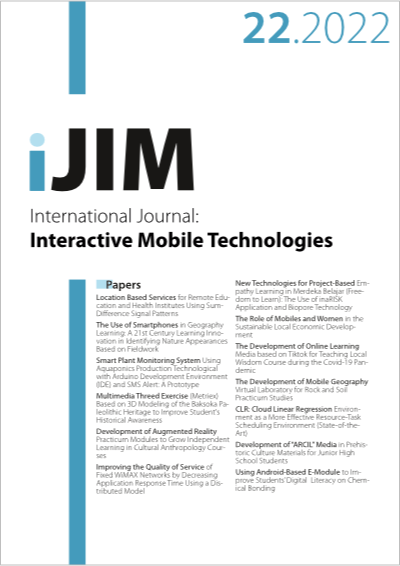Location Based Services for Remote Education and Health Institutes Using Sum-Difference Signal Patterns
DOI:
https://doi.org/10.3991/ijim.v16i22.35337Keywords:
Location-based services, Education and Health Institutes, Angle of Arrival, Direction of ArrivalAbstract
This paper presents a simple approach to providing location-based services (LBSs) for the remotely located educational and health institutes on demand, particularly in emergency situations i.e., COVID-19, using an antenna array. The proposed approach consists of the sum and difference patterns of the signal obtained from the antenna array at the base station of a wireless network. It provides the location of the targeting institute i.e., education and health, in terms of the angle-of-arrival (AoA) which can be used to steer the radiation beam in the targeted direction in order to provide the desired services i.e., emergency wireless communication link. In this way, fast and high bandwidth-based communication and networking can be possible for the mentioned organizations. We show antenna array design and location finding results in this paper. The obtained results in terms of antenna parameters and AoA show that the proposed approach is efficient, less complicated, and can be implemented in the next-generation wireless networks i.e., AI-enabled IoT and 5G systems, particularly for the educational and health institutes.
Downloads
Published
How to Cite
Issue
Section
License
Copyright (c) 2022 Muneer Ahmed Shaikh, Sarmad Ahmed Shaikh, Fatima Zohra Shaikh

This work is licensed under a Creative Commons Attribution 4.0 International License.



